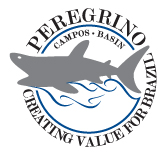 The Peregrino project which was developed for a heavy oil field in Brazil's Campos basin marked a major milestone for William Jacob Management to pursue high-stakes capital projects. Peregrino is Statoil's largest operated field outside Norway and the first it has brought onstream in Brazil. The Peregrino project which was developed for a heavy oil field in Brazil's Campos basin marked a major milestone for William Jacob Management to pursue high-stakes capital projects. Peregrino is Statoil's largest operated field outside Norway and the first it has brought onstream in Brazil.
The Peregrino FPSO project was initiated in 2007 and the conversion from a very large crude carrier (VLCC) to a complex offshore oil production installation required more than 15 million labor hours and an investment in excess of USD 1 billion. At present the vessel is operating in the Campos Basin 85 km off Rio de Janeiro, Brazil. The unit has a storage capacity of 1.6 million barrels of oil, and produced well over 15 million barrels during its first year of operation.
The field, discovered by Petrobras in 1994, subsequently was licensed to a series of international oil companies which appraised the find in the early years of the new century. In 2005, Norsk Hydro acquired EnCana's 50% stake. At the time, Peregrino was operated by Kerr McGee, which in 2006 was taken over by Anadarko. In 2008, Statoil, following its merger with Hydro's oil and gas division the previous year, bought Anadarko's stake and became the sole licensee and operator.
The field is in about 120 m (393 ft) of water in the Campos basin, 85 km (53 mi) from the coast of Rio de Janeiro state. It has been developed with two wellhead/drilling platforms about 10 km (6.2 mi) apart, which send production to an FPSO stationed in-between.
The Peregrino FPSO was converted from a newbuild VLCC tanker, Maersk Nova, at the Keppel FELS yard in Singapore. It has 1.6 MMbbl storage capacity, production capacity of 100,000 b/d of oil and 7.3 MMcf/d of gas, and liquids handling capacity of 350,000 b/d. The 12,500-metric ton (13,779-ton) topsides consist of 15 modules and there are accommodations for 100 personnel.
The two wellhead platforms engineered and managed by William Jacob Management, were fabricated by Kiewit in Corpus Christi, Texas. Each has a topside of about 8,200 metric tons (9,039 tons) dry weight supported by a 100-m (328-ft) tall jacket weighing 6,700 metric tons (7,385 tons). The platforms were installed in March 2010. Operations, maintenance and modification services are provided by William Jacob Management on behalf of the Wood Group. |
|
|



 The Peregrino project which was developed for a heavy oil field in Brazil's Campos basin marked a major milestone for William Jacob Management to pursue high-stakes capital projects. Peregrino is Statoil's largest operated field outside Norway and the first it has brought onstream in Brazil.
The Peregrino project which was developed for a heavy oil field in Brazil's Campos basin marked a major milestone for William Jacob Management to pursue high-stakes capital projects. Peregrino is Statoil's largest operated field outside Norway and the first it has brought onstream in Brazil. 
